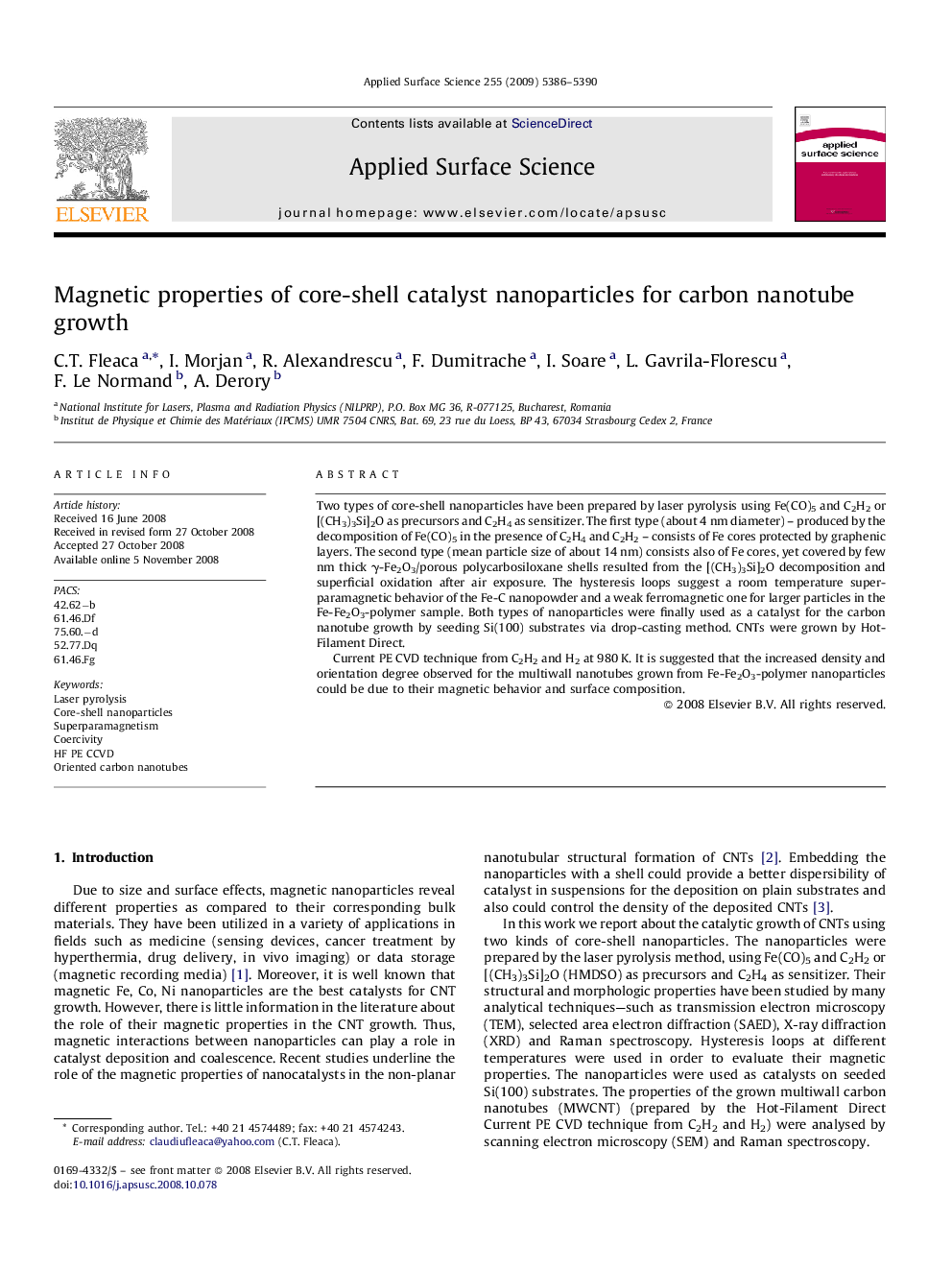| Article ID | Journal | Published Year | Pages | File Type |
|---|---|---|---|---|
| 5367564 | Applied Surface Science | 2009 | 5 Pages |
Two types of core-shell nanoparticles have been prepared by laser pyrolysis using Fe(CO)5 and C2H2 or [(CH3)3Si]2O as precursors and C2H4 as sensitizer. The first type (about 4 nm diameter) - produced by the decomposition of Fe(CO)5 in the presence of C2H4 and C2H2 - consists of Fe cores protected by graphenic layers. The second type (mean particle size of about 14 nm) consists also of Fe cores, yet covered by few nm thick γ-Fe2O3/porous polycarbosiloxane shells resulted from the [(CH3)3Si]2O decomposition and superficial oxidation after air exposure. The hysteresis loops suggest a room temperature superparamagnetic behavior of the Fe-C nanopowder and a weak ferromagnetic one for larger particles in the Fe-Fe2O3-polymer sample. Both types of nanoparticles were finally used as a catalyst for the carbon nanotube growth by seeding Si(100) substrates via drop-casting method. CNTs were grown by Hot-Filament Direct.Current PE CVD technique from C2H2 and H2 at 980 K. It is suggested that the increased density and orientation degree observed for the multiwall nanotubes grown from Fe-Fe2O3-polymer nanoparticles could be due to their magnetic behavior and surface composition.
